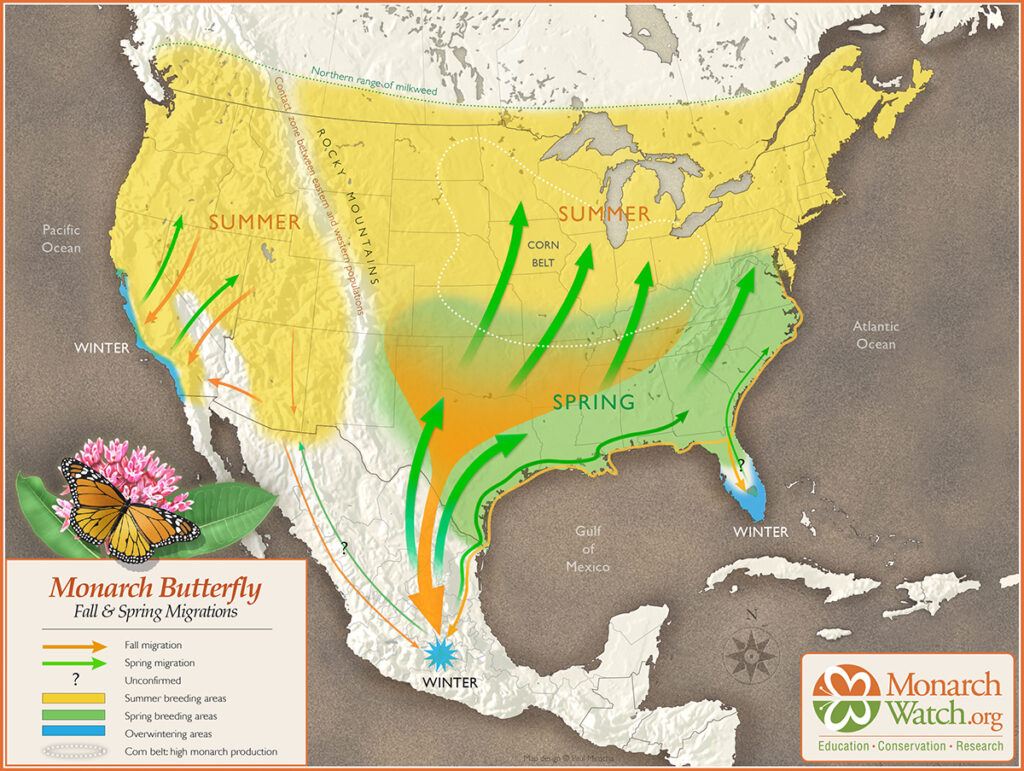Dissimilar to most different bugs in mild environments, Ruler butterflies can’t endure a long virus winter. All things being equal, they spend the colder time of year in perching spots. Rulers west of the Rough Mountains travel to little forests of trees along the California coast. Those east of the Rough Mountains fly farther south to the woodlands high in the mountains of Mexico. The ruler’s movement is driven via occasional changes. Daylength and temperature changes impact the development of the Ruler.
In every one of the world, no butterflies relocate like the Rulers of North America. They travel a lot farther than any remaining tropical butterflies, up to 3,000 miles. They are the main butterflies to make such a long, two way movement consistently. Incredibly, they fly in masses to a similar winter perches, frequently to precisely the same trees. Their movement is more the sort we anticipate from birds or whales. Nonetheless, not at all like birds and whales, people just make the full circle once. It is their youngsters’ grandkids that return south the accompanying fall.
A few different types of Lepidoptera (butterflies and moths) travel significant distances, however they for the most part head down one path just, frequently following food. This one-way development is appropriately called migration. In tropical terrains, butterflies really do relocate to and fro as the seasons change. Toward the start of the dry season, the food plants wilt and the butterflies pass on to find a moister environment. At the point when the downpours show up, the food plants come back and the butterflies return.
The Fall Relocation (September – November). This figure is an understanding of the courses taken by Rulers throughout the Fall movement. The pathways depend on label recuperations and perceptions of Relocating Rulers. At the point when the pre-fall and late-summer Rulers rise up out of their pupae, or chrysalides, they are naturally and typically unique in relation to those arising in the mid year. The more limited days and cooler quality of pre-fall trigger changes. In Minnesota this happens around the finish of August. Despite the fact that these butterflies seem to be summer grown-ups, they won’t mate or lay eggs until the accompanying spring. All things considered, their little bodies get ready for an exhausting flight. Generally lone creatures, they frequently bunch around evening time while moving ever toward the south. Assuming they wait excessively lengthy, they will not have the option to make the excursion; since they are heartless, they can’t fly in chilly climate.
Fat, put away in the mid-region, is a basic component of their endurance for the colder time of year. This fat not just energizes their trip of one to 3,000 miles, yet should go on until the following spring when they start the trip back north. As they relocate southwards, Rulers stop to nectar, and they really put on weight during the excursion! A few specialists feel that Rulers save their “fuel” in trip by floating on air flows as they travel south. This is an area of incredible interest for scientists; there are numerous unanswered inquiries concerning how these little organic entities can travel up until this point.
Another inexplicable problem is the means by which Rulers find the overwintering locales every year. Some way or another they know their direction, despite the fact that the butterflies getting back to Mexico or California each fall are the extraordinary incredible grandkids of the butterflies that left the past spring. Nobody knows precisely the way that their homing framework works; it is one more of the numerous unanswered inquiries in the butterfly world. Thanks to monarchwatch.org
(0)
Did you know Monarch Butterflies migrate to Mexico ?
 #30atv #30a
#30atv #30a

Be the first to comment on "Did you know Monarch Butterflies migrate to Mexico ?"